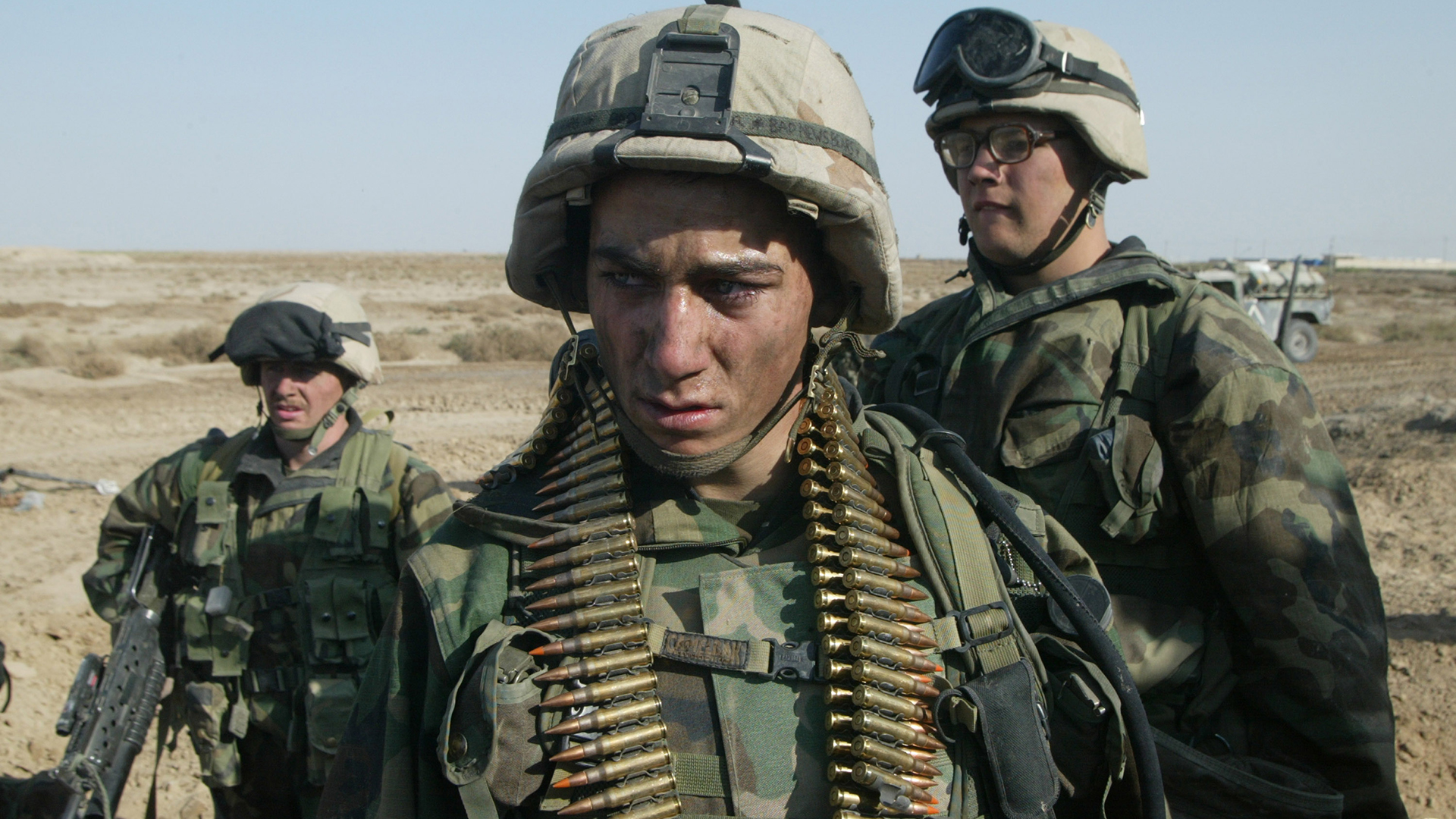

Around 4 a.m. on March 21, 2003, U.S. soldiers and Marines crossed the border from Kuwait to Iraq, marking the start of a ground invasion that would reach Baghdad a little over two weeks later and ultimately destroy Saddam Hussein’s regime after 26 days of heavy fighting.
Two days later, U.S. troops began fighting a major battle in the southern Iraqi city of Nasiriyah, showing just how difficult the advance to Baghdad would be.
The U.S.-led military coalition that invaded Iraq had expected to face little resistance in southern Iraq, but instead, they encountered paramilitary forces including Fedayeen Saddam fighters that had been sent to southern Iraqi cities to buttress defenses, according to the first volume of the U.S. Army’s history of the Iraq War.
At Samawah, Zubayr, and Nasiriyah, U.S. ground troops ran into “tenacious resistance from the Fedayeen instead of the Iraqi Army units they had anticipated fighting,” according to the official history.
Subscribe to Task & Purpose Today. Get the latest military news, entertainment, and gear in your inbox daily.
Nearly 6,000 Marines and sailors under Task Force Tarawa first entered Nasiriyah, on March 23, 2003, to capture two bridges on the eastern part of the city. The Marines were met with powerful and determined attacks from Iraqi paramilitary forces using pickup trucks with mounted machine guns, according to the Army’s official history; and the battle for Nasiriyah quickly became “a damned tough urban fight,” said then Army Lt. Gen. David McKiernan, who commanded all U.S. and coalition ground forces during the invasion.

A total of 18 Marines were killed that day, including eight who died when Air Force A-10 Warthogs mistakenly attacked Marines.
Also on March 23, 2003, the Army’s 507th Maintenance Company was ambushed in Nasiriyah. Eleven soldiers were killed and six taken prisoner including Pfc. Lori Piestewa, who later died. Of the remaining prisoners of war: Army Pfc. Jessica Lynch was rescued by special operations forces on April 1, 2003, and the other soldiers were liberated by Marines on April 13, 2003.
The Marine Corps’ Regimental Combat Team 1 had to pass through Nasiriyah on March 24 and 25, 2003. The unit’s commander, Col. Joe Dowdy, was later relieved by then Maj. Gen. James Mattis, commander of the 1st Marine Division at the time, for not moving quickly enough.
Marine veteran John Hoellwarth said he remembers how Dowdy told his unit bluntly the night before it passed through Nasiriyah that they would take casualties in the coming battle for the city.
“I remember being terrified that shit just got real,” said Hoellwarth, who was a corporal with Regimental Combat Team 1 at the time.
The following day, Hoellworth was in the back of a Humvee with canvas doors as his unit pushed through Nasiriyah. He saw the bodies of enemy fighters in the city’s streets as well as defensive positions that had been abandoned.

“I remember the sound of bullets flying around as we made our way through the city,” Hoellwarth told Task & Purpose. “You can tell because they sound like popcorn. I don’t know if you know this, but when someone is shooting at you, you can hear a little click in the air – it’s like a miniature sound barrier being broken – and that’s the sound of bullets flying past you.”
Donald Rumsfeld, who was defense secretary at the time, had not expected that U.S. troops would have to engage in so much close combat on the way to Baghdad, said Stephen Biddle, a professor of international and public affairs at Columbia University.
Rumsfeld and others who pushed the U.S. military to invest in transformational technology had expected that standoff weapons such as cruise missiles along with precision-guided munitions would be able to destroy the Iraqi military’s armored vehicles, artillery, and infantry formations, Biddle told Task & Purpose.
Instead, U.S. forces fought a series of intense pitched battles, including in Baghdad itself, showing the limits of what standoff weapons can accomplish, he said.

“And so, the era of close combat clearly had not ended in 2003; and the experience in Ukraine is demonstrating that it hasn’t ended as of 2023,” Biddle said. ”That means that skills, equipment, and organizations you need to do close combat right remained important in 2003 and they remain important today.”
While the conventional phase of the Iraq war in 2003 holds tactical and operational lessons that still apply today, the biggest lesson from the war is arguably that capturing an adversary’s capital is not the same as victory, Biddle said.
Within weeks of the U.S.-led invasion of Iraq, Baghdad had fallen and Iraqi forces were more destroyed than the German army at the end of World War II, he said. But instead of ending, the war morphed into an insurgency that lasted for years.
Yet the U.S. military seems to still believe that the way to win wars is by destroying an enemy’s military, and that has shaped the U.S. government’s approach toward Ukraine, Biddle said.
“The war doesn’t end until both sides decide to stop shooting,” Biddle said. “If one side decides to keep shooting, even if their conventional military has been driven from the field, the war doesn’t end and it isn’t yet clear who’s going to win and who’s going to lose. That’s just as true for Ukraine as it was for Afghanistan in 2001 and it was for Iraq in 2003.”
The latest on Task & Purpose
- The Army has finally fielded its replacement for its Vietnam-era armored personnel carriers
- Guards open fire after a car ran the gate at Naval Base Coronado
- Everything you need to know about Army Mountain Warfare School
- Fake Marine gets 70 months in prison for defrauding veterans charities
- US airman accused of insider attack in Syria cleared of all charges